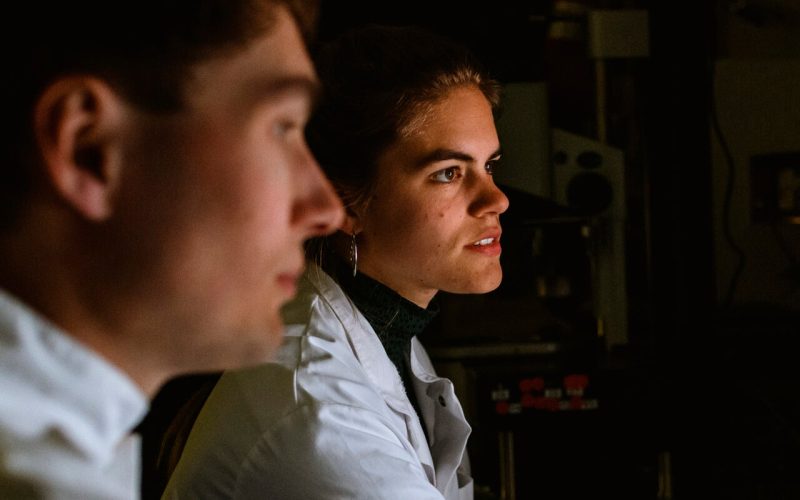Imagine you are completely immobile, only able to blink to communicate with the outside world. This is the reality for people with locked-in syndrome, a condition where patients are completely paralysed except for their eyes, while being fully conscious. Mark Bruurmijn spent his PhD working on building a brain-computer interface, helping these patients to communicate. On April 11th Bruurmijn received his doctorate for his work on decoding the brain.
The goal of Bruurmijn’s research was to distinguish the brain’s activation during multiple hand gestures using functional MRI. Each hand gesture, for example a fist or a peace sign, shows a distinct activation of the motor areas of the brain. This enables people with locked-in syndrome to control communication software by attempting to move their hand. Bruurmijn explains: ‘The more gestures we can accurately decode, the easier it is to build sophisticated communication software. Each movement could act as a “keyboard-key” controlling the software.’
In order to decode the intended hand movement of paralysed patients, Bruurmijn studied people who had an amputation of their arm within the last 30 years.
Bruurmijn: ‘We were mainly interested in whether there was still a representation of the missing hand in the brain, even 30 years after amputation. For a long time, the belief was that a loss of use would result in a loss of function in the brain. ‘
Participants of the study were put in an fMRI and told to “move” their amputated hand into one of six gestures. Using a computer-learning algorithm, Bruurmijn and his colleagues then tried to determine what gesture the patient was performing. The results were then compared to the non-amputated hand as well as to a control group of participants without arm amputation.
“The more gestures we can accurately decode, the easier it is to build sophisticated communication software.”
Bruurmijn and his colleagues found that the motor and sensory areas of the brain still contain useful information about detailed movements of the hand, even if the hand has been amputated. In the motor area of the brain, the information about movements of the missing hand is as detailed as for intact hands. When focusing on the motor area of the brain, the algorithm was even able to distinguish movements when looking at the opposite side of the brain.
The same is not true when looking at the sensory area of the brain, as the lack of sensory feedback causes the brain’s activation patterns to be less distinguishable, even though the information about the missing hand is still there.
In the future, Bruurmijn hopes that this technology will help patients with locked-in syndrome communicate with the outside world, as communication is one of the key factors for quality of life. With further development, patients might only need one brain-computer interface to control software with “movements” of both hands, significantly increasing the possibilities of assistive devices.
